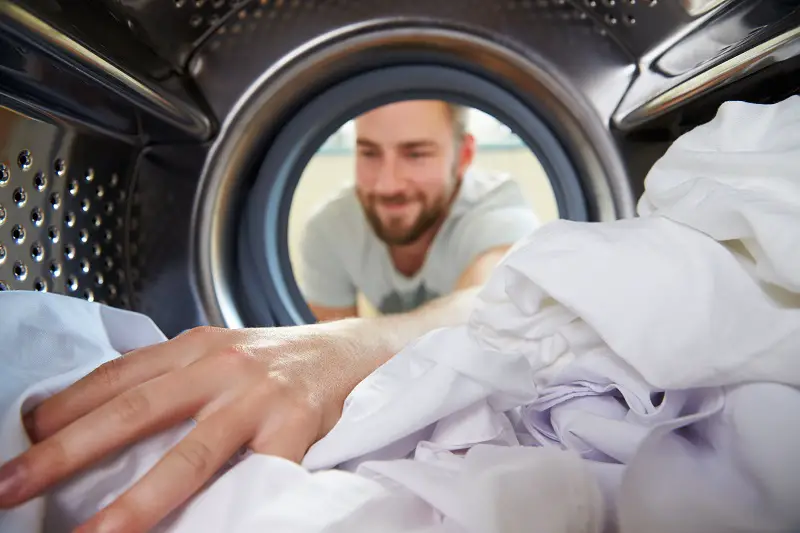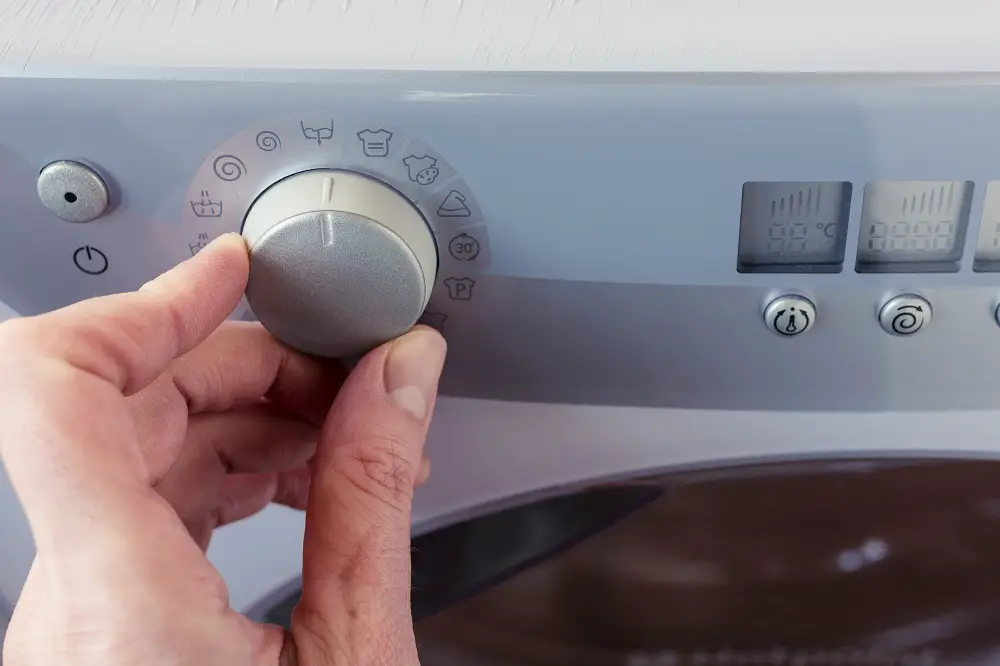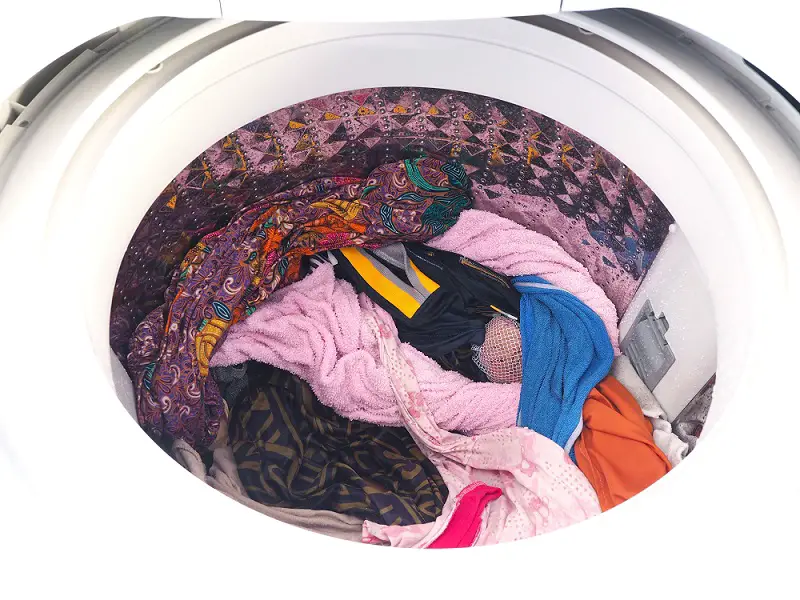Portable dryers are a potential fire hazard (like every electric device), and improper dryer vent setups or missing maintenance result in a higher risk. Fortunately, actual statistics suggest, that portable dryer fires are not very common and these appliances are quite safe.
Portable dryers might have enhanced designs these days to improve safety and efficiency. However, this is only true if your portable dryer is well-installed and well-maintained.
Key Takeaways
- Portable dryers can catch fire
- The risk is slightly higher than for regular dryers
- Dryers are quite safe and fire is very rare (0.032%)
- Accumulated heat is the main problem
- Good setups and maintenance reduce the risk
Table of Contents
Can Portable Dryers Catch Fire?
Portable dryers can catch fire just like regular dryers and they may be at a higher risk because the construction is very compact, designed for low costs, and their heat distribution is limited.
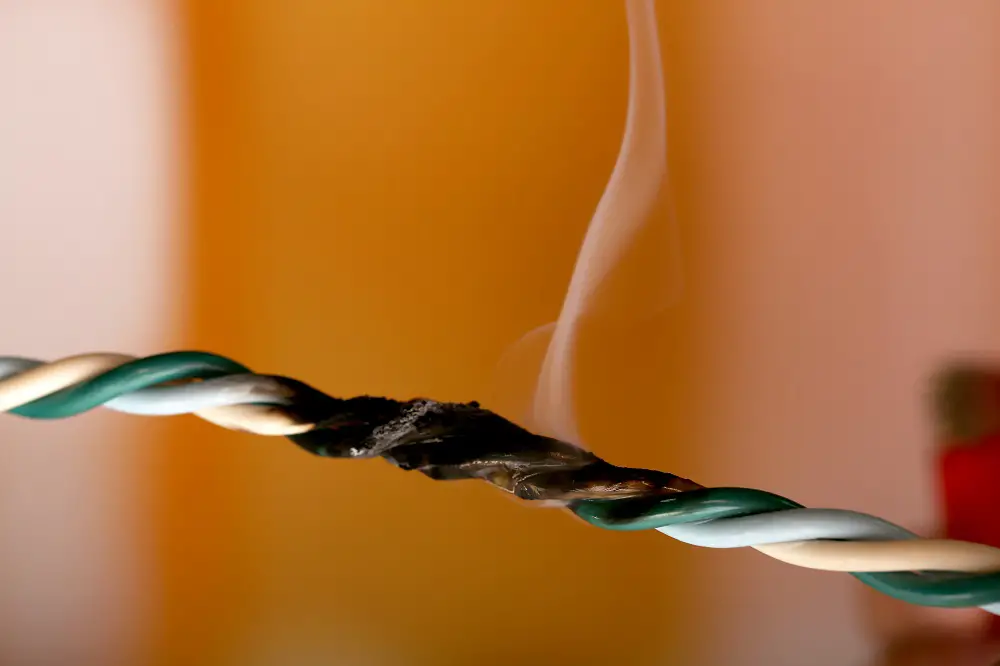
There is no statistic differentiating between regular and portable dryers but the common general dryer causes lead to the conclusion that portable dryers are more prone to catch fire.
By combining several factors we can conclude that the undesired accumulation of heat inside a dryer is the biggest problem. Using a small device without maximized venting can easily be considered as being more affected.
Furthermore, dryers with a cheaper design or older appliances offer less protection and have a higher risk of overheating or malfunctioning, eventually causing a fire.
Are Portable Dryer Fires Common?
A fire of a portable dryer can happen with the same or slightly higher probability as a regular dryer, but the overall chance remains very low. At an estimated risk per year of 0.032 %, portable dryer fires are not common at all.
As per statistics by the U.S. Fire Administration, there’s an average of 2,900 home fires caused by clothes dryers each year. Failing to clean the dryer is the leading cause of these fires (accounting for 34%).
Of the approximately 120 million households in the U.S., about 75% of the households own a dryer, including portable dryers. That’s approximately 90 million homes with a dryer. Considering the statistics, the fire risk for a single usage is extremely minimal.
That’s not to say that you don’t have to be careful with the use and maintenance of your portable dryers.
A ventless portable dryer is a much better and safer option than a vented one.
7 Reasons For Portable Dryer Fire
Some of the common reasons for a portable dryer fire include the following:
1. Lint Accumulation
Dryer lint buildup is one of the leading causes of fires.
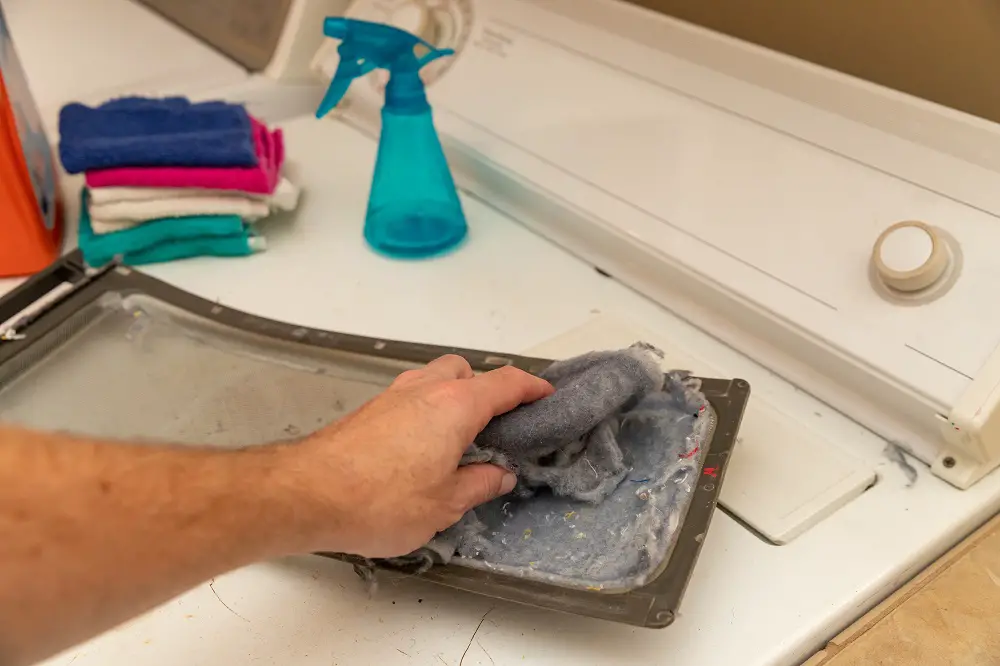
A full lint trap reduces the dryer’s airflow, making it work harder to dry each load of laundry. Lint is a highly combustible material; if it works its way into the heating element, it’s a potential fire hazard.
2. Blocked Vent
Clogging of the dryer venting system with lint, dirt, or debris makes it harder for the hot air to escape, leading to hazardous conditions.
The clothes dryers’ outdoor vent could also be obstructed by nesting insects, rodents, or birds if left exposed.
3. A Crushed Hose
Pushing your portable dryer back to the wall could crush the exhaust duct or hose.
When this happens, the dryer cannot move the warm air out, leading to a dangerous blowback of lint – a potential fire hazard.
4. Mechanical and Electrical Failure
While not as common, a portable clothes dryer with faulty wiring and damaged machinery could cause fires.
If your dryer takes longer to dry clothes, get the parts checked and replaced or repaired as needed.
5. Improper Dryer Use
It could lead to a fire when you over-load your dryer or put items that shouldn’t be put in it (or exposed to heat). Volatile or flammable items or items made of rubber, plastic, and foam aren’t suited for clothes dryers.
6. Unsuitable Duct Material
Plastic or vinyl ducts are not allowed by building codes in most places. A semi-rigid metal dryer duct is a good choice for a flexible duct.
Foil type or the flexible aluminum duct are preferred choices. Concealed ducting must be rigid metal (aluminum or galvanized).
7. Use of Indoor Dryer Vent Kit
Although indoor dryer vents are common with portable dryers owing to the lack of facilities for outdoor venting, these aren’t very safe.
Indoor dryer venting not only leads to increased humidity, moisture, and mold problems but is also a potential fire hazard as it spews lint into the air indoors, which is highly flammable.
It’s strongly recommended against using an indoor dryer vent kit with a gas dryer owing to increased chances of carbon monoxide poisoning.
Is it Safe to Leave The Portable Dryer On Overnight?
It’s generally not suggested to leave any electrical appliances, including portable dryers, running overnight when you’re sleeping or out of the house.
However, if your portable dryer has modern safety features that prevent malfunctions or overheating, it’s usually safe to leave it on overnight.
If you own an older model, you could use it overnight only if it has been regularly serviced and your place has a smoke detector and a CO and fire alarm.
Most modern dryers come with timers or thermostats, so you can choose a lower temperature for more extended drying periods, like overnight.
If you’d like to know more, read into Leaving Tumbler Dryer On Overnight: Is It Safe or Should You Worry?
Is it Safe to Vent a Portable Dryer Indoors?
Portable dryers can be vented indoors, provided you move any combustibles or flammables like cleaning supplies or any volatile chemicals away from the dryer.
However, running your dryer’s exhaust port indoors isn’t a good idea as it could lead to too much moisture buildup indoors, leading to mold and health problems.
It’s definitely not safe for gas dryers to have indoor dryer vents.
If you absolutely must have an indoor dryer vent, it’s good practice to regularly clean the lint filters, traps, and vent system.
You can find more on venting portable dryers indoors here.
Prevent Portable Dryer Fires
Here are some tips to prevent a portable dryer fire.
Ensure Proper Installation
A proper dryer installation is one of the first steps to prevent fires.
- First, connect the dryer to a 120-volt (norma) electrical outlet since most portable dryers are rated at 120V.
- Next, ensure the ventilation duct is securely attached to the dryer and the exterior exhaust vent.
- Finally, place the dryer away from shelves or other appliances.
Clean Lint Trap Regularly
The lint filter must be cleaned regularly after or before every use.
If you avoid clearing the lint regularly, it could restrict the airflow or accumulate into a tinder bundle, which is ideal for starting a fire.
Opt For Outdoor Venting
Unless you have a dedicated laundry room and ample ventilation, outdoor dryer vents are safer than indoor (gas dryers must always have outdoor venting).
The humid air and lint are better exhausted outside your living space for safety purposes. As per International Residential Code, exhaust ducts must terminate outside the building.
Inspect and Clean Vents and Ducts Regularly
Metal ducts and dryer vents must be inspected monthly for safe dryer operation.
If your dryer takes longer to dry, gets hotter than usual, or emits a burning smell, these are signs of a clogged dryer vent. Clean the ducts and vents thoroughly at least once or twice a year and replace the parts that cannot be repaired.
Avoid Leaving Your House With the Dryer On
It is good practice to turn off your dryer when you’re not at home.
If your dryer catches fire when you’re away, it could burn down your entire house or cause extensive damage.
Avoid Overloading the Dryer
Overloading your dryer makes it work harder to dry the laundry and generates excess heat – a safety hazard.
In addition, an overloaded dryer results in excessive lint buildup and prevents proper ventilation.
Replace Ducts
Replace plastic or foil ribbed ducts with a solid metal dryer duct.

Unlike plastic or foil ducts that could sag and lead to lint buildup, metal ducts don’t have these issues. They’re also more likely to contain any fires that could start.
Also, use metal tape instead of rivets or screws to secure joints. Use a short and straight duct to avoid lint buildup and for faster drying.
Regular Dryer Inspection and Maintenance
Whether you use portable electric dryers, gas dryers, heat pump dryers, or condenser dryers, they need periodic inspections and maintenance, preferably by professionals once every year.
This is even more important if your dryer has indoor venting.
Find more here: How To Service A Tumble Dryer? (And How Often)
Opt For Spin or Ventless Dryers
A condenser or heat pump dryer is better than a vented electric dryer.
However, spin dryers are an even better option as far as safety is concerned. These, too, need to be maintained well, just like a vented dryer, except for the vent system.
Avoid Garments Stained With Flammable Materials
Avoid putting into the dryer any items of your laundry that have come in contact with anything flammable (like gasoline, cooking oil, alcohol, etc.) Instead, wash such items of clothing multiple times and consider drying them outdoors or in a well-ventilated room, away from heat.
According to the U.S. Consumer Product Safety Commission, faulty appliances are to blame in some cases of dryer-caused house fires. However, most fires can be prevented with the proper precautions.
Conclusion
Portable dryers are as safe as normal dryers and concerning the statistics, we can say that dryer fires are very rare.
While there are fire hazards associated with dryers as much as with other electrical appliances, a portable dryer is safe as long as it is installed and maintained well and used right.
